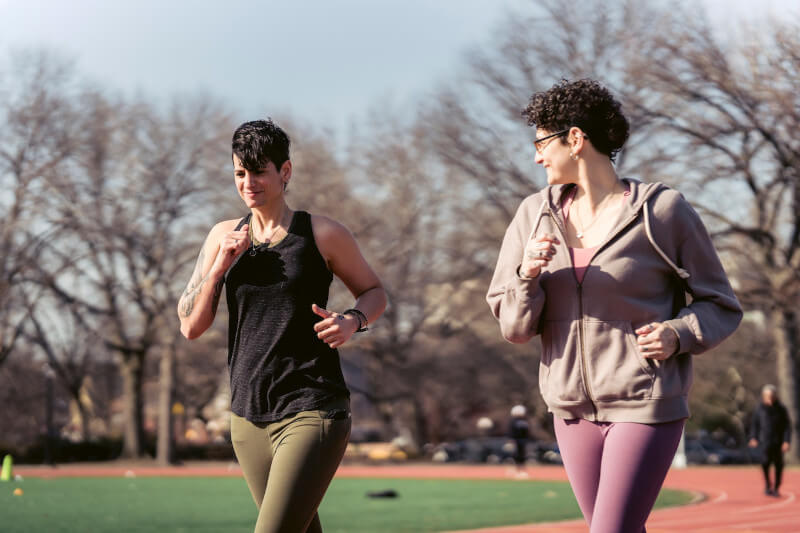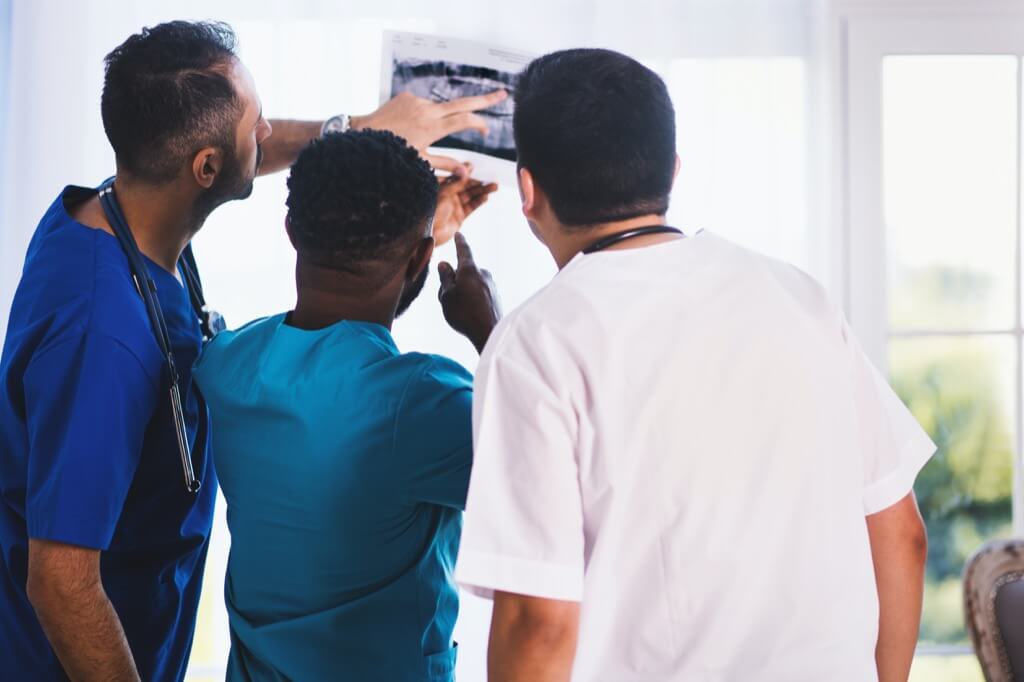Have you ever woken up a day or two after an intense workout, feeling like you’ve been hit by a truck? Those muscle aches have been misattributed for a long time. L
For decades, many believed “delayed onset muscle soreness” (DOMS) was a direct result of lactic acid buildup in our muscles. This notion arose from early 20th-century studies suggesting that rigorous exercise, depleting our oxygen supply, led to this aftermath. But contemporary research has a different story to tell.
Lactic acid, it seems, is not our enemy after all. It becomes a source of energy for our muscles when oxygen is scarce. Moreover, the soreness we associate with DOMS takes time to manifest, usually between 24-72 hours post-exercise. Lactic acid, on the other hand, clears out of our system within a couple of hours. This time gap alone signals that the two are not linked. Scientists have only started shedding light on the actual role of lactic acid in our muscles in recent decades.
So, if it’s not lactic acid, what leaves our muscles aching post-strenuous activity? The answer lies in microscopic damage. When we push our muscles harder than usual or introduce them to a new activity, tiny tears or microfractures occur. These small injuries are the real reason behind DOMS.
But here’s the silver lining: our muscles are adaptable. After a few encounters with a particular activity and proper recovery time, they become accustomed to the stress, reducing the chances of DOMS. This adaptability is often referred to as the “repeated-bout effect”. As a rule of thumb, if you increase your exercise intensity by less than 10%, your muscles should handle it without retaliating with DOMS.
Taking a deeper look, the true origins of DOMS are found in the structural abnormalities within our muscles, particularly the z-disk. Muscle biopsies post vigorous activity have revealed damages in the z-band filaments that hold our muscle fibers together. Further, injuries in the muscle’s connective tissues amplify pain, making even the slightest movement or stretch agonizing. This is due to the heightened sensitivity of the nociceptors, our body’s pain detectors.
The Swell Side Effect of Exercise
Did you know when your muscles appear unusually bulky after an intense workout, it’s not because of an overnight muscle growth spurt? The swelling is a telltale sign of delayed onset muscle soreness (DOMS). This is your muscles’ way of reacting to those tiny tears and microtrauma caused by pushing your limits. So next time you glance in the mirror post-workout and marvel at your “gains,” remember it’s just your body’s natural response to hard work!
Stretching and DOMS: The Real Deal
You’ve probably heard that good old stretching can be your saving grace against post-exercise aches. But recent findings suggest stretching might not be the silver bullet we once believed. While it’s beneficial for flexibility and relaxation, its impact on DOMS is relatively minimal. So, while it won’t harm you to reach for your toes, don’t rely on it solely to keep soreness at bay.
Tried and True Methods
If stretching isn’t the antidote, what is? Turns out, treatments that enhance blood circulation to the muscles can be quite effective. From hot baths to massage sessions, and sauna stints to low-intensity workouts, these methods have been shown to provide relief from the discomfort of muscle soreness. Remember, it’s all about getting that blood flowing!
High-Intensity Workouts
It might sound counterproductive, but amping up the intensity of your exercise, even after you’ve hit the soreness stage, can alleviate muscle pain. While scientists are still unraveling the mystery behind this, it’s believed that the pain-relieving effects of exercise play a part. This is another testament to the body’s amazing adaptive abilities, especially when it comes to endurance training and pain tolerance.
Warm-Up Wisdom and Incremental Intensity
If you’re diving into a new exercise regime or upping your usual game, consider warming up extensively. Comprehensive warm-up sessions can drastically reduce the onset of DOMS. And if you’re looking to ramp up your workouts, try the slow and steady approach. Boosting your exercise intensity by less than 10% weekly strikes the right balance between progress and avoiding soreness.
Muscle Power Surge
Experiencing a sudden burst of strength after a few exercise sessions? Don’t jump to the conclusion that you’ve bulked up in record time. In reality, this boost is due to an increase in the frequency of nerve impulses prompting muscle contractions in response to your activity. It’s a short-lived power surge, but a welcome one, nonetheless!
Meet Muscle Hypertrophy
The term ‘Muscle Hypertrophy’ might sound like something out of a science fiction novel, but it’s just the technical term for when your muscles grow in size due to physical exertion. So, the next time someone comments on your increasing biceps, you can impress them with your knowledge of muscle hypertrophy!
CPK: The Muscle Damage Detector
Ever heard of CPK? It’s an enzyme found in muscles. When there’s muscle damage, CPK takes a trip from its usual location in the muscle to your bloodstream. Measuring its levels can give insights into the extent of muscle injury, helping professionals understand the severity of the DOMS you’re experiencing.
Revisiting the Cool-Down Conundrum
Cool-downs post-exercise were once touted as the magic remedy against DOMS. But with the debunking of the lactic acid myth, it’s now clear that post-workout stretches or other cool-down methods aren’t the solution to muscle soreness. Still, a good cool-down can help bring your heart rate down gradually and mentally transition from workout mode.
Lactic Acid
Lactic acid isn’t just associated with muscles. You’ll find it in everyday items like yogurt, cottage cheese, and even in some laundry detergents. Its versatile nature and the historical misrepresentation of its role in muscle soreness make it a fascinating subject. Plus, who would have guessed that a Nobel Prize-winning scientist would derive conclusions about human muscles from a jar-bound frog’s leg?
Muscles and Lactic Acid
Contrary to past beliefs, lactic acid isn’t just a by-product; it’s a fuel source. When oxygen is scarce, muscles convert glycogen to lactic acid, and the mitochondria use it to produce energy. The more you engage in endurance training, the more efficiently your muscles can use lactic acid. This explains why seasoned athletes can perform at peak levels for extended periods.
The Ultimate Fitness Metric: VO2 Max
To gauge one’s cardiovascular fitness, the term “VO2 Max” comes into play. This metric measures the maximum amount of oxygen one can utilize during intensive exercise. The variations in this metric among individuals are staggering! From Tour de France champions to cross-country skiers, some athletes achieve jaw-dropping numbers. For instance, while Miguel Indurain’s peak VO2 max reached 88 ml/kg/min, Bjorn Daehlie, a cross-country skier, boasted a VO2 max of 96 ml/kg/min during his off-season.
Animal Athletes
Believe it or not, humans don’t have the highest VO2 max values in the animal kingdom. A racehorse’s VO2 max can soar to 180 ml/kg/min, while Iditarod-trained Siberian dogs can reach an astounding 240 ml/kg/min. So, while you’re pushing your limits, remember there’s a Siberian dog out there giving you a run for your money!
Tackling Post-Workout Muscle Pain
The Warm-Up Advantage
Always start your exercise routine with an extensive warm-up
This will prepare your body for the upcoming physical activity and can reduce the chances of developing DOMS. Remember, if you’re trying something new or intensifying your routine, a thorough warm-up is even more crucial.
Stretching: Set Realistic Expectations
While stretching is great for flexibility, it might not be the ultimate solution to prevent post-exercise muscle pain. Incorporate it into your routine for overall well-being, but don’t solely depend on it to dodge soreness.
Intensity Increment Strategy
Gradually increase the intensity of your workouts
If you ramp up your routine by less than 10% each week, you’ll likely strike the perfect balance between advancing in your training and avoiding significant muscle pain.
Promote Blood Flow for Relief
Explore methods that boost blood circulation in your muscles. From enjoying a relaxing hot bath to indulging in a therapeutic massage, increased blood flow can significantly help in alleviating muscle soreness.
Embrace High-Intensity with Caution
Consider including short bursts of high-intensity workouts.
These can sometimes counteract muscle discomfort. But always listen to your body and ensure you’re not overdoing it.
Stay Hydrated and Nutrition-Focused
Keep yourself hydrated and focus on nutrient-rich foods.
Proper hydration can aid muscle recovery, and certain foods, rich in proteins and essential nutrients, can support muscle repair.
Listen to Your Body
Always be in tune with your body.
If the pain is persistent or too intense, consider consulting a professional. Sometimes, the best remedy is rest, allowing your body the time it needs to heal and recover.
Is Lactic Acid to Blame?
No, lactic acid is not the culprit behind post-exercise muscle soreness. While it was once believed to cause muscle pain, this myth has been debunked. Lactic acid serves as a fuel source for muscles during strenuous activity. So, the next time someone blames lactic acid for their aches, you can set the record straight!
Consider Professional Muscle Checks
If you’re consistently sore after workouts, think about getting your CPK levels checked. This enzyme, when found in the bloodstream, can indicate muscle damage, and monitoring its levels can provide insights into the extent of muscle trauma you might be experiencing.
Always Prioritize Recovery
Prioritize your post-workout recovery. While cool-downs may not directly combat DOMS, they help in transitioning your body from an active state to a resting state. Consider including light stretches, hydration, and relaxation techniques as part of your recovery routine.
The intriguing part? There’s a time lapse between the workout and the peak soreness. It’s thought that this delay allows for an inflammatory process to occur, which subsequently makes our nociceptors more receptive.




